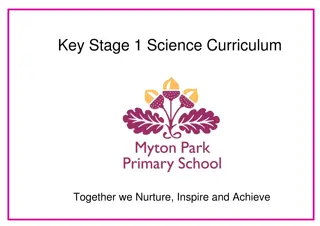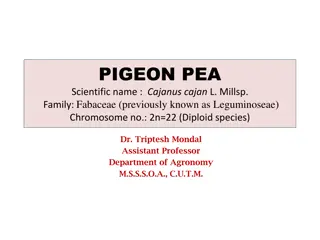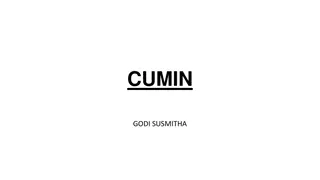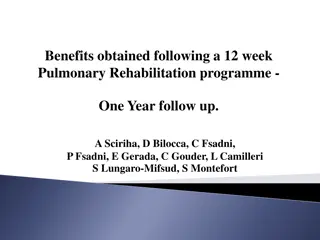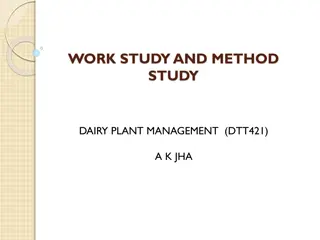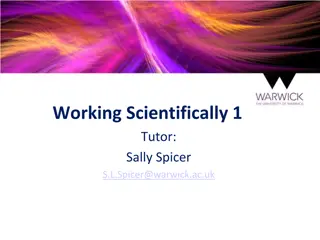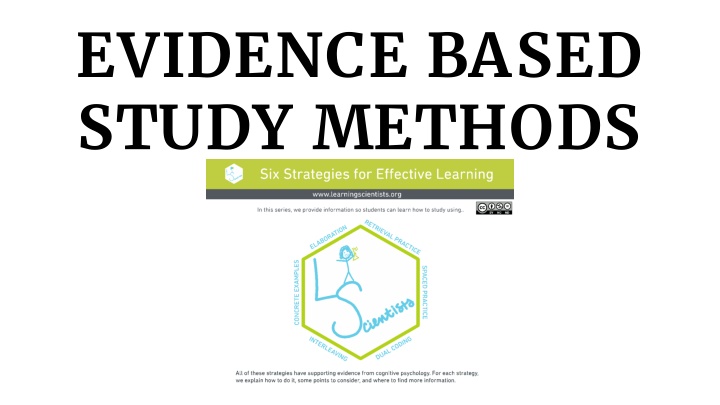
Effective Study Strategies: Evidence-Based Methods for Better Learning
Discover evidence-based study methods such as spaced practice, dual coding, interleaving, and concrete examples to enhance your learning experience. These strategies involve techniques like reviewing information over time, combining visuals and words, switching between ideas, and linking concepts with real-life examples.
Uploaded on | 5 Views
Download Presentation

Please find below an Image/Link to download the presentation.
The content on the website is provided AS IS for your information and personal use only. It may not be sold, licensed, or shared on other websites without obtaining consent from the author. If you encounter any issues during the download, it is possible that the publisher has removed the file from their server.
You are allowed to download the files provided on this website for personal or commercial use, subject to the condition that they are used lawfully. All files are the property of their respective owners.
The content on the website is provided AS IS for your information and personal use only. It may not be sold, licensed, or shared on other websites without obtaining consent from the author.
E N D
Presentation Transcript
EVIDENCE BASED STUDY METHODS
SIX STRATEGIES: Website: Spaced practice Dual coding Interleaving Concrete examples Elaboration Retrieval practice learningscientists.org
Spaced practice: Start early and set aside a bit of time every day - 5 hours over 2 weeks is better than 5 hours at a go Review information after classes are over, but take a break first After reviewing the most recent work, go back and review work from further back Do little bits of studying over time - this make you retrieve the knowledge and skills over and over, building neural pathways!
Dual coding: Using visuals and words together Find visuals in your class notes and compare them to the words used Covering the words, describe the visuals in your own words Take information in words that you want to remember, and draw/create visuals for them You can use different forms of visuals - diagrams, comic strips, timelines, etc. Try to draw what you are studying from memory, then compare to words to make sure you have everything
Interleaving: Switch between ideas in one study session - don t study one idea for too long Go back over these ideas in different orders - this strengthens understanding and retrieval Think about the links between these different ideas as you switch between them Do take the time you need in order to understand the ideas - don t switch too quickly! This will probably feel harder than sticking to one subject at a time - but the payoff is worth it!
Concrete examples: Collect examples your teacher has used, and look in your notes for as many examples of ideas that you can find Make a link between the idea you are studying and as many examples as you can find, so you understand how the example relates to the idea Explain these examples to others Don t use just any examples you find - make sure they are correct - ask your teacher! Do try to create your own correct examples
Elaboration: Ask yourself questions about the ideas you are studying - why are things this way? What led to this idea? How does this idea work? Find the answers in your course materials Take different ideas you are studying and make connections between them - compare how they are similar and different Make connections between your own experiences and the ideas you are studying Make sure your connections are correct! Check with your teacher! Try to be able to explain ideas without looking at notes
Retrieval practice: Put away your class materials and write or draw everything you know and can remember about your topic After this, compare what you wrote with your class materials - fill in gaps and correct mistakes Try to make your own tests - or trade tests with friends Flash cards can also help with this method Take note of the things you missed - these are the ideas you need to study further Continue to test yourself until you have no gaps - keep checking back to your notes! Recall connections and examples, as well as definitions



